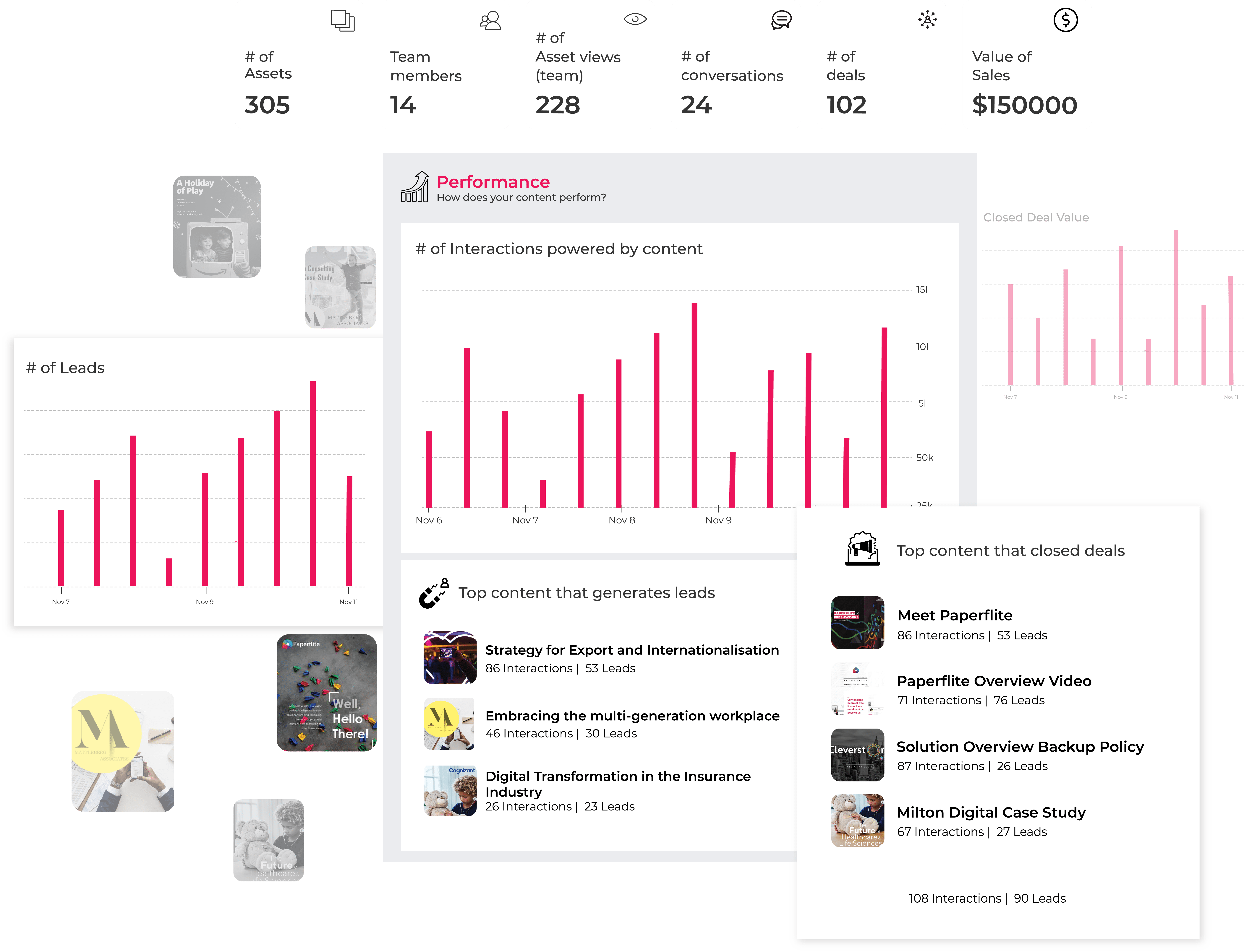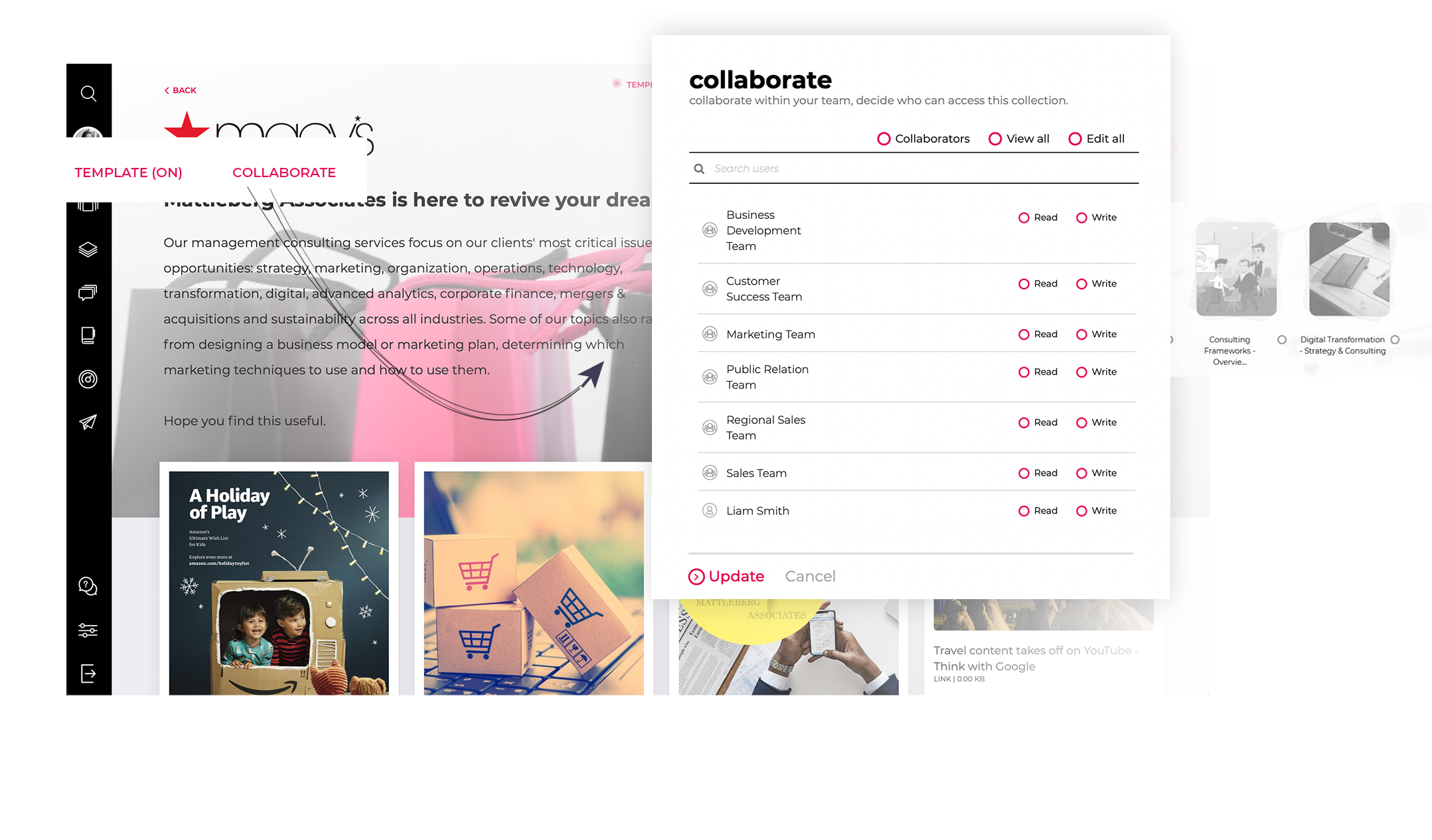What is GTM Enablement: Tools and Strategies for Success
A Go-To-Market (GTM) team is a cross-functional group responsible for launching and promoting products or services effectively, ensuring that they reach the right audience with the right message at the right time.
Comprised of various roles such as marketing, sales, product management, and customer support, the GTM team is responsible for ensuring alignment across all departments, creating compelling messaging, and delivering a seamless customer experience.
However, even the most skilled GTM teams face challenges—whether it's aligning objectives across departments, keeping up with product developments, or maintaining consistent communication.
These challenges often require a little extra push to overcome, and this is where GTM enablement comes in.
Summary: Enhancing GTM Effectiveness
The work of a GTM team is complex, requiring seamless communication and alignment among its members.
As products evolve, keeping everyone updated and on the same page becomes increasingly challenging.
This is where GTM enablement proves invaluable. By streamlining communication and ensuring all team members have access to the latest information and resources, GTM enablement helps teams identify and overcome challenges enabling them to achieve the best possible results.
Table of Contents
- What is GTM Enablement?
- Key Challenges Addressed by GTM Enablement
- Teams Involved in GTM Enablement
- Benefits of GTM Enablement
- GTM Enablement Strategy
- GTM Enablement Tools
What is GTM Enablement?
GTM enablement is the process of equipping your GTM teams with the knowledge, tools, and resources they need to understand the product better, take it to market faster, and provide a superior customer experience.
This process often includes clear channels of communication, training, access to relevant content, feedback loops, and other support mechanisms designed to align the team and enhance their performance.
Key Challenges Addressed by GTM Enablement:
- Alignment of the GTM Team: Ensuring all departments work towards the same goals.
- Keeping Teams Updated: Providing real-time updates on product developments.
- Consistent Communication: Facilitating seamless communication across teams.
GTM enablement not only addresses these challenges but also provides tools that make the entire process more efficient and effective.
People Involved in GTM Enablement
A successful GTM enablement strategy involves several key players, each playing a crucial role in the process:
- GTM Manager: Oversees the overall GTM strategy and ensures alignment across teams.
- Marketing Manager: Develops and executes marketing campaigns that resonate with the target audience.
- Sales Manager: Focuses on converting leads into customers through effective sales strategies.
- Product Management Lead: Ensures the product meets market needs and coordinates with other teams to align product features with market demands.
- Customer Success Manager: Works to ensure customers achieve their desired outcomes with the product, driving retention and satisfaction.
Each of these roles contributes to the GTM enablement process by ensuring that their respective teams are well-prepared, aligned, and capable of executing the GTM strategy effectively.
Benefits of GTM Enablement
GTM enablement offers a range of benefits that directly impact the success of a product in the market.
Below are some of the key benefits and how they are achieved through GTM enablement:
1. Aligned Team and Objectives
Impact: When all teams are aligned, they work towards the same goals, resulting in a cohesive strategy that drives success.
How it's achieved: GTM enablement provides a centralized platform for sharing goals, updates, and progress, ensuring that everyone is on the same page.
Tool Advantage: A GTM enablement tool ensures that all team members have access to the latest information, reducing the risk of misalignment.
2. Faster Time to Market
Impact: Speed is critical in gaining a competitive edge, and a well-coordinated GTM team can bring products to market faster.
How it's achieved: By streamlining communication and providing easy access to resources, GTM enablement accelerates the time-to-market process.
Tool Advantage: Tools that centralize content and automate processes allow teams to work more efficiently, reducing delays.
3. Enhanced Sales Effectiveness
Impact: Well-equipped sales teams can better understand customer needs, leading to higher conversion rates.
How it's achieved: GTM enablement provides sales teams with the necessary training and resources to engage prospects effectively.
Tool Advantage: Sales enablement tools offer features like content insights and AI-driven recommendations, helping sales teams close deals more effectively.
4. Improved Customer Experience
Impact: A positive customer experience leads to higher satisfaction, loyalty, and repeat business.
How it's achieved: GTM enablement ensures that customer-facing teams have the knowledge and tools to address customer needs promptly and accurately.
Tool Advantage: Customer insights gathered through GTM enablement tools help teams tailor their interactions to meet customer expectations.
5. Data-Driven Decision Making
Impact: Making informed decisions based on data leads to better outcomes and reduces the risk of failure.
How it's achieved: GTM enablement tools provide analytics and reporting capabilities that offer insights into team performance and market trends.
Tool Advantage: By tracking content utilization and team performance, GTM enablement tools allow for continuous improvement and optimization.
6. Consistent Messaging and Branding
Impact: Consistent messaging builds brand trust and recognition, making it easier to connect with the target audience.
How it's achieved: GTM enablement ensures that all teams have access to the latest brand guidelines and messaging.
Tool Advantage: Tools that facilitate easy updating and sharing of content help maintain consistency across all channels.
7. Market Penetration and Expansion
Impact: A well-executed GTM strategy can open up new markets and drive growth in existing ones.
How it's achieved: GTM enablement equips teams with the knowledge and tools needed to effectively penetrate new markets.
Tool Advantage: Market insights and customer feedback gathered through GTM enablement tools inform strategies for market expansion.
7 key aspects of a sound GTM Enablement Strategy
A robust GTM enablement strategy is essential for maximizing the effectiveness of your GTM team. Below are the key components of a successful strategy:
1. Training and Development
Focus: Providing product knowledge, market insights, and sales training to teams.
Implementation: Regular training sessions, workshops, and e-learning modules ensure that all team members are equipped with the necessary knowledge and skills.
2. Tools and Technology
Focus: Implementing CRM systems, marketing automation tools, and other technologies to streamline processes.
Implementation: Investing in the right tools and technologies that support the GTM strategy and enhance team performance.
3. Content Creation
Focus: Developing sales enablement materials and marketing content to support GTM activities.
Implementation: Creating high-quality content based on the information from CRM systems that resonates with the target audience and supports the sales and marketing efforts.
4. Performance Metrics

Focus: Setting up analytics and reporting systems to track not just performance but alignment, impact and efficiency.
Implementation: Identifying and regularly reviewing data to gain insights into performance, behaviour, alignment and impact to identify areas for improvement and facilitate data-driven decisions.
5. Cross-Functional Collaboration

Focus: Enhancing communication and coordination among marketing, sales, product, and support teams. For the successful implementation of enablement strategies, it is imperative for all the above teams to have consistent communication and strong working relationships.
Implementation: Facilitating regular meetings, updates, and collaboration sessions to ensure alignment across teams.
6. Continuous Improvement
Focus: Regularly reviewing and optimizing processes based on feedback and performance data.
Implementation: Establishing a feedback loop that allows for continuous improvement and adaptation of the GTM strategy.
7. Customer Insights
Focus: Utilizing customer feedback and market research to inform strategies and improvements.
Implementation: Gathering and analyzing customer data to tailor the GTM approach to meet customer needs effectively.
GTM Enablement Tools
The right tools can make a significant difference in the effectiveness of your GTM enablement strategy.
Below are some of the key tools that can enhance your GTM efforts:
CRM: HubSpot
What it is: A customer relationship management (CRM) platform that helps manage customer interactions and data. HubSpot offers all the tools and integrations you need to grow your business.
It is all powered by a single Smart CRM database, so everyone in your organization—Marketing, Sales, Service, and Operations—is working off the same system of record.
Who uses it: Sales, marketing, and customer support teams.
Features: Contact management, sales pipeline tracking, email marketing, analytics, and reporting.
HubSpot's integration with other tools and its ability to centralize customer data makes it an essential tool for GTM enablement.
Sales Enablement: Paperflite
What it is: A comprehensive platform designed to streamline and support the sales process. It offers a range of features and tools aimed at enhancing content management, customization, and collaboration between product, marketing and sales teams.
Who uses it: Sales and marketing teams.
Features: Paperflite provides data driven analysis and insights. Some key features are -
- Content Insights: Provides statistics on each content piece's performance, aiding teams in understanding what resonates with prospective clients.
- Content management: Manage all you content related to sales and marketing in a centralized storage place where it can be accessed easily.
- Prospect Engagement Insights: Tracks prospect engagement to identify hot leads, and enables customized follow up plans.
- CRM Integration: Integrated with a CRM, Paperflite provides insights into revenue generated by specific content, linking engagement to revenue outcomes.
- Smart Content Recommendations: Utilizes AI to suggest relevant materials based on prospect interactions and preferences. Paperflite ensures sales teams receive valuable guidance for enhancing their engagement strategies.
- Instant Access with live updates: Providing real-time updates, Paperflite ensures that sales teams can access the latest materials immediately. This feature guarantees teams always have up-to-date information, allowing prompt responses to prospect inquiries.
- Collaborative Content Creation: Facilitating collaborative content creation among team members, Paperflite promotes teamwork and leverages collective experience to produce high-quality content.
Apart from providing data driven analysis, Paperflite enables effortless yet secure content sharing through email or direct links. Paperflite also allows for mobile accessibility offering greater flexibility and responsiveness while engaging prospects.
Marketing Automation Tool: Marketo
What it is: The world’s largest marketing automation platform, Marketo is a singular solution that lets you attract, segment, and nurture customers — from discovery to biggest fan and each touchpoint is tracked so you know what’s working. No more batch and blast. No more unqualified leads just effective engagement.
Who uses it: Marketing teams.
Features: Email marketing, lead management, customer engagement, and analytics. Marketo's ability to automate complex marketing processes and track performance makes
Interactive Content Tool: Cleverstory
What it is: A no-code interactive content creation platform that helps build engaging content experiences.
Who uses it: Marketing teams and content creators.
Features:
- Content Creation: Enables the creation of personalized landing and interactive pages.
- Content Tracking: Monitors the performance of created pages.
- Content Organization: Keeps all content organized and accessible.
- Content Gating: Facilitates lead generation through smart gating.
Cleverstory's ability to create interactive resource hubs makes it a valuable tool for GTM teams, providing easy access to all necessary resources.
Project Management Tool: Asana
What it is: Asana is a leader in collaborative project management software for teams, no matter their size or locational distribution.
Asana helps you, your teams, and your stakeholders collaborate faster and smoother to achieve business objectives.
Who uses it: All GTM teams.
Features: Task management, project timelines, team collaboration, and reporting.
Asana's ability to facilitate cross-functional collaboration and keep everyone aligned on project timelines makes it an essential tool for GTM enablement.
Conclusion
GTM enablement is the key to unlocking the full potential of your Go-To-Market team. By providing the right tools, training, and resources, you can ensure that your team is aligned, informed, and empowered to deliver exceptional results.
Investing in GTM enablement not only helps your team overcome challenges but also drives faster time to market, enhanced sales effectiveness, and improved customer experiences.
Looking for a tool to take your GTM strategy up a notch, talk to us!
